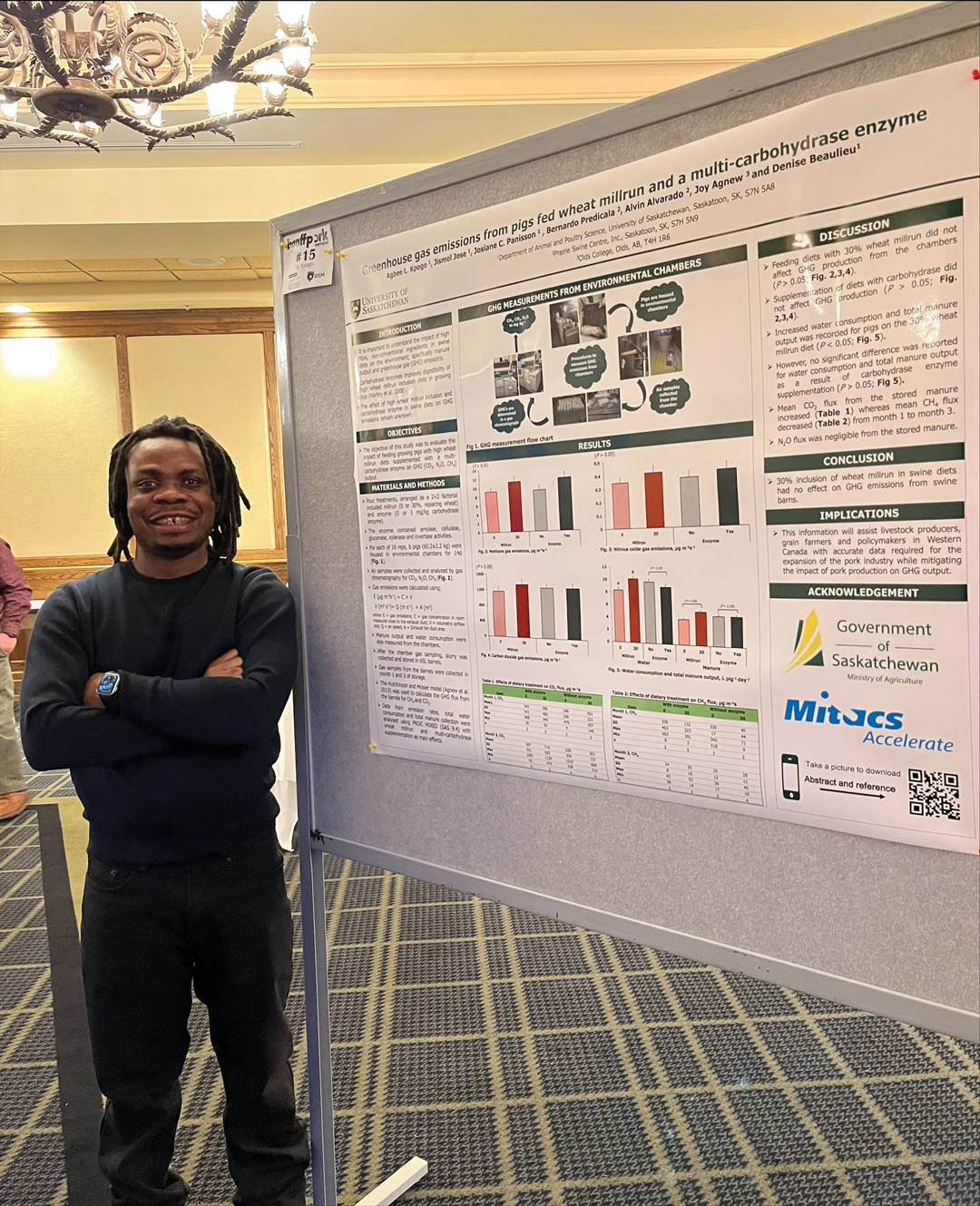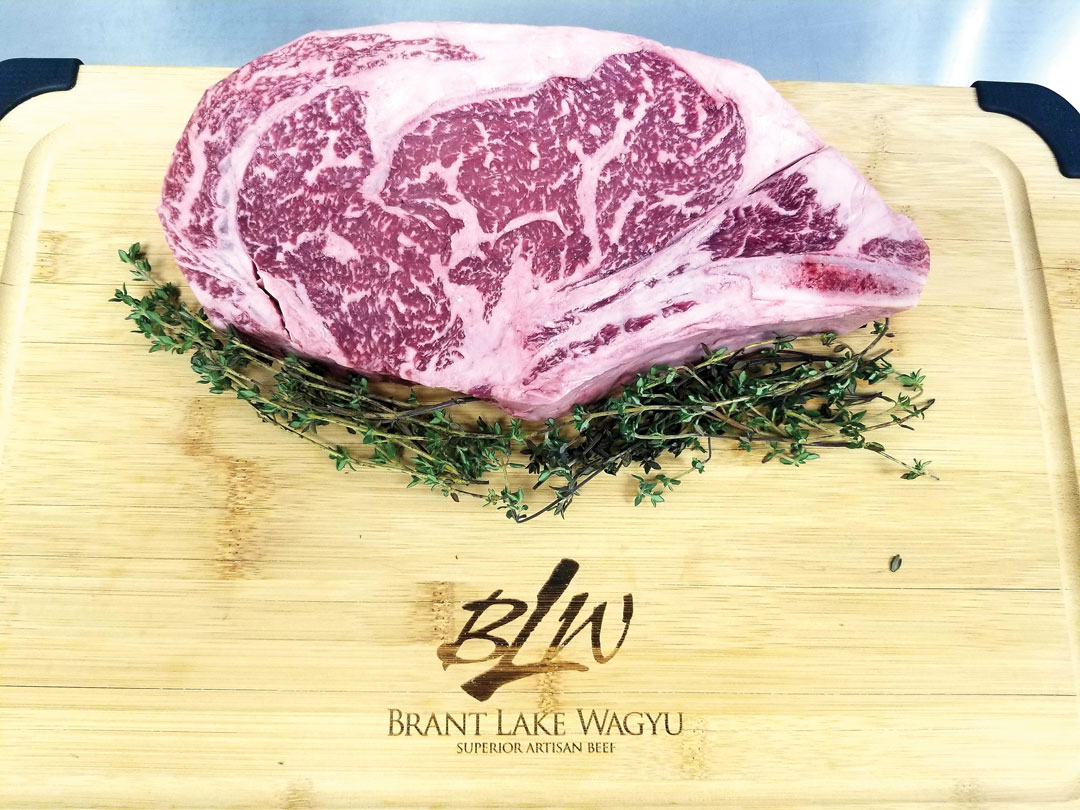HAPPY ACCIDENT
BY ZOLTAN VARADI • PHOTO COURTESY OF AGBEE KPOGO
Agbee Kpogo saw an opportunity to conduct research on swine nutrition while completing an undergraduate degree in animal science in his native Ghana. Working for a company that dealt mainly with poultry, he realized there was a glaring gap in that region’s research materials on sustainable, large-scale pig farming.
“There was nothing on pigs. It was all basically subsistence, backyard farming,” he said. “I was reading around and realized that a lot of people in Europe and North America were doing work with pigs, but there was nothing like that in Ghana.”
While pursuing his master’s degree at the University of Saskatchewan, Kpogo, now a post-doctoral student at the school’s College of Agriculture and Bioresources, investigated whether feeding pigs wheat mill run affects methane emissions. Not suitable for human consumption, this byproduct of the milling process contains germ, bran and flour and is used as an ingredient in livestock and horse feed and as a pet food filler.
He was initially puzzled by the results of his project. “Wheat mill run is basically the non-starchy part, the fibrous part,” he explained. “Pigs break it down in the hind gut, but it doesn’t stay there for very long. When they eat fibre, and it’s the same for humans, very little is digested unless you use enzymes to break it down.” Based on this, Kpogo hypothesized wheat mill run in the diet would lead to an increase in release of greenhouse gases by the pigs.
Surprisingly, Kpogo’s findings, which were published in the October 2021 issue of the Journal of Animal Science, showed that adding up to 30 per cent wheat mill run to pig feed did not significantly increase the animals’ greenhouse gas emissions. This upended conventional wisdom that an increase in fibre results in an increase in gas production.
“It didn’t do anything. There was no difference between when you fed them wheat mill run or when you fed them their regular diet,” said Kpogo. “However, when it comes to the growth rate [of the pigs], that slows down just a little bit. But when you look at the cost implications—wheat mill run is cheaper than actual wheat—it kind of balances out.”
In other words: by substituting a quantity of wheat mill run for more expensive feed ingredients such as soy and corn, pork farmers should be able to pocket savings without their livestock producing greater amounts of greenhouse gases.
As for his test subjects, Kpogo can’t definitively say whether or not they appreciate this more cost-efficient diet. He did say pigs simply aren’t noted to be picky eaters. “Do they like it? We didn’t study palatability or anything, but the mill run didn’t affect feed intake.”
Upon completion of his PhD in 2024, Kpogo said his ultimate goal is to return to Ghana and establish a research facility with an eye on increasing sustainable food production. In the meantime, there is more work to be done on the subject at hand, including a feed lifecycle analysis that will involve the measurement of emissions from pig waste.







Comments